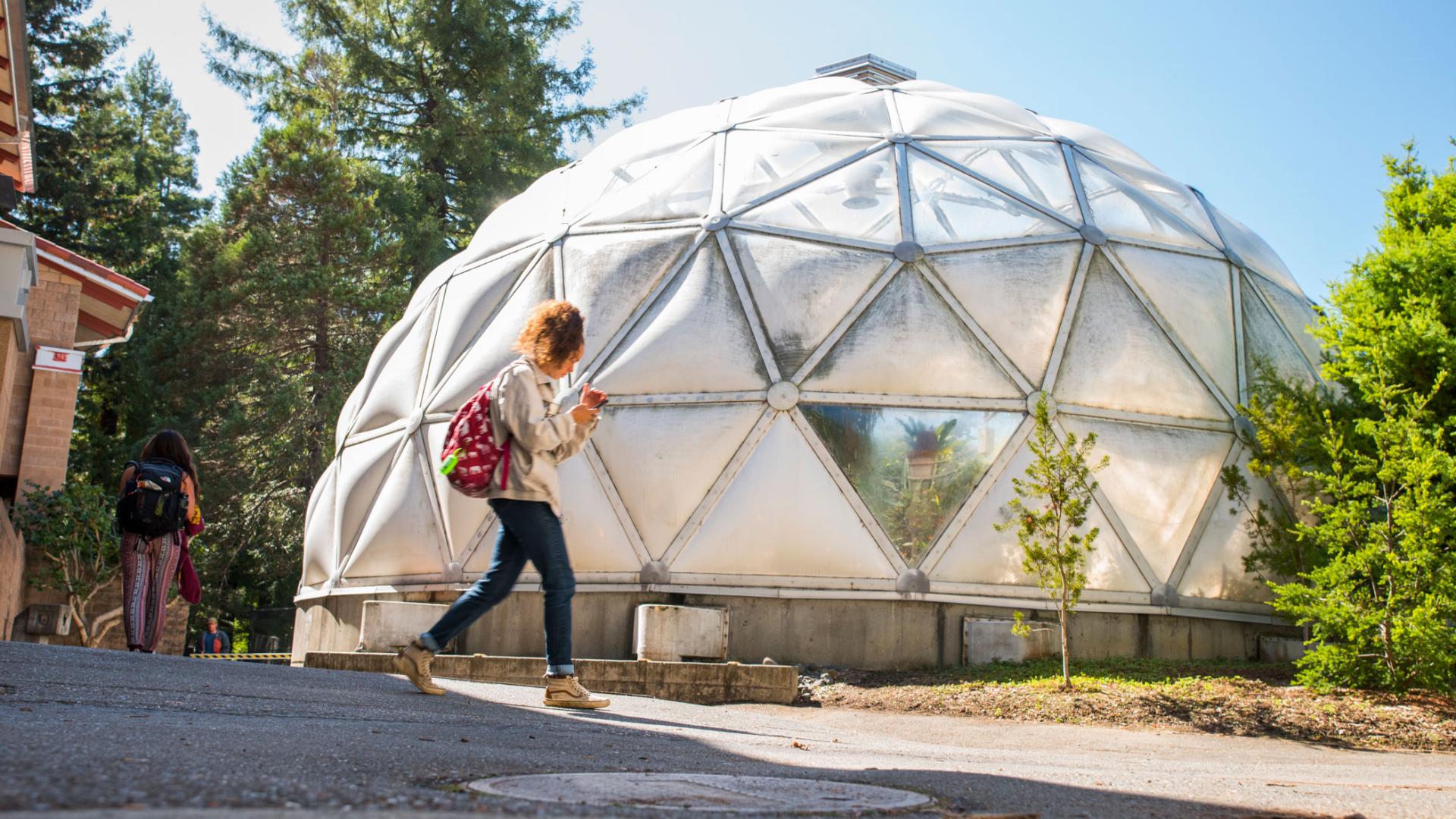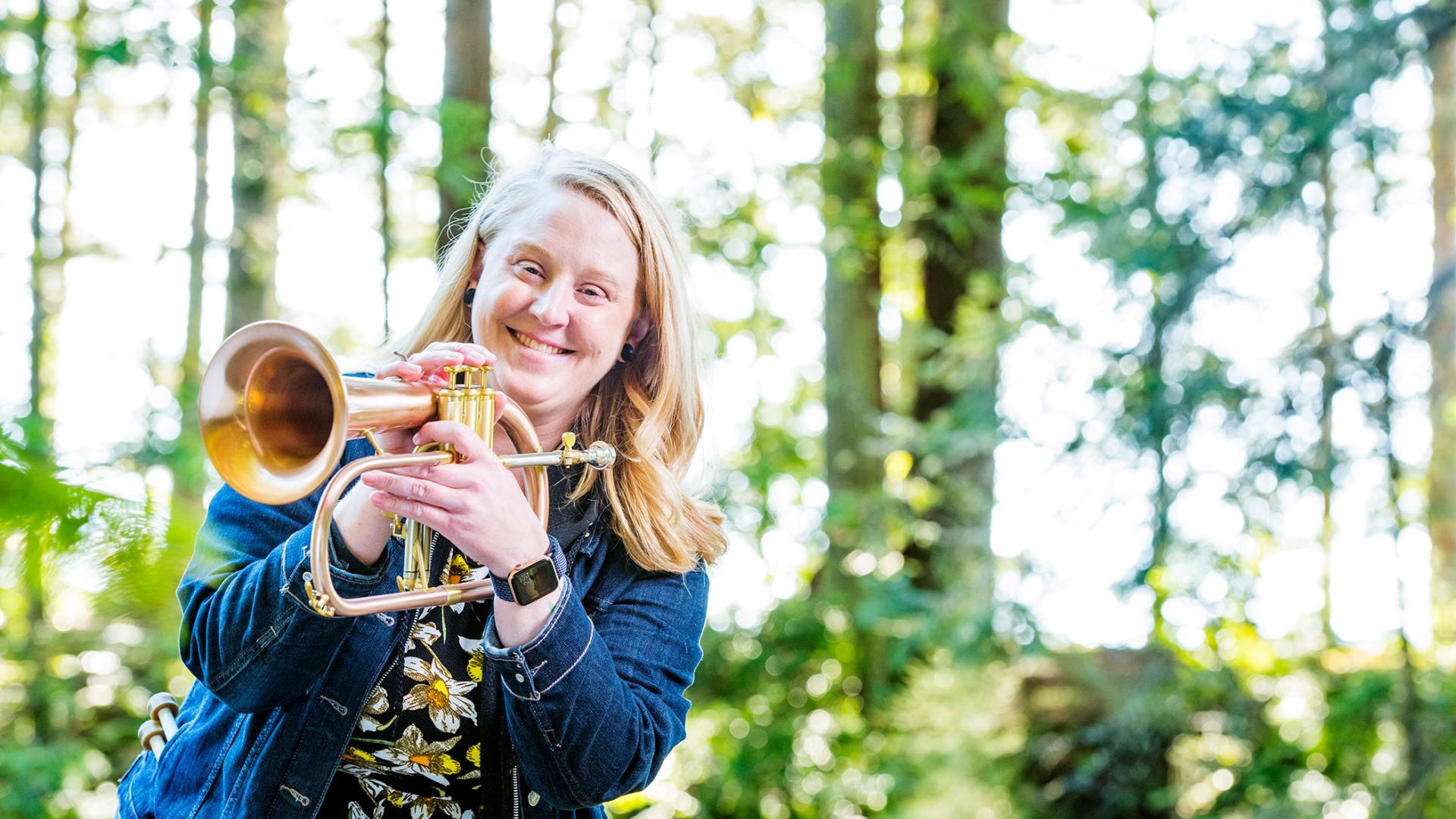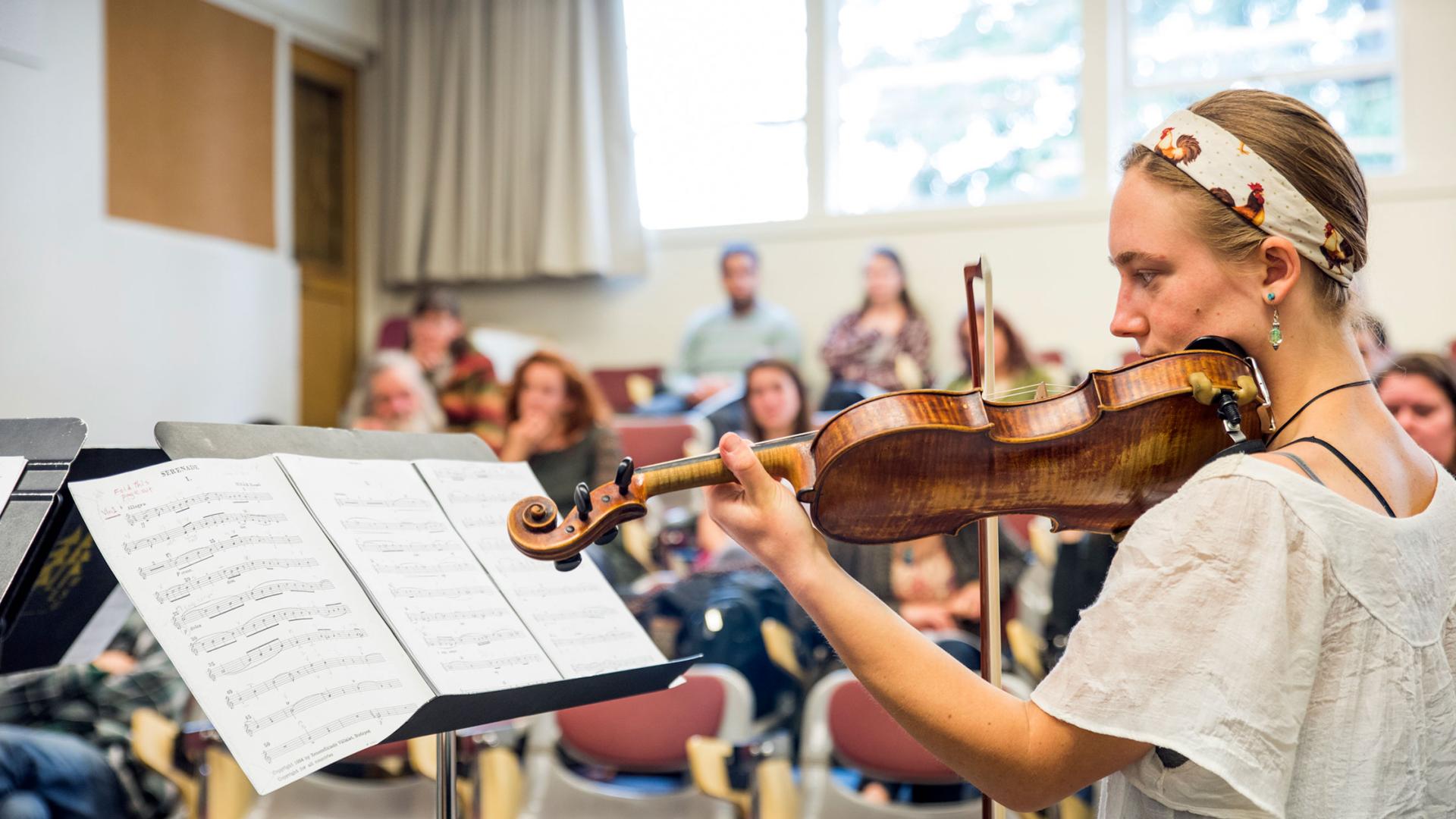Dabid Garcia
Breadcrumb
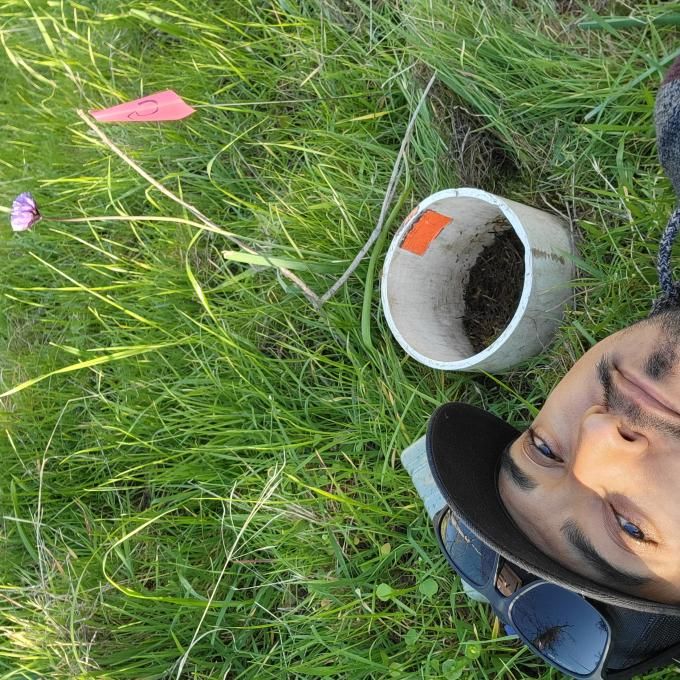
Advisor
Matthew JohnsonDabid Garcia,
Thesis:Testing Vegetation Composition as a Predictor of Soil Organic Carbon on Working lands in California Using a Voluntary Monitoring Network
Dabid will be analyzing vegetation composition and soil core data collected from many ranches across California to look for correlations between plant species composition and soil organic carbon. On working lands, vegetation composition has the potential to alter the amount of carbon being introduced into the soil through a mix of physical and biological processes. Studies have shown that land management practices can greatly influence vegetation composition, thus shifting the soil ecology and chemistry. Loss of native plant populations in the state of California have been linked to a decline in total biodiversity in local ecosystems. By comparing soil carbon data to the above ground vegetation composition, Dabid aims to find possible correlations between native plant species abundance and the amount of soil carbon measured at each sampling site. This project will use data collected by Point Blue Conservation Science’s Rangeland Monitoring Network, a collaborative effort between biologists and private land managers to monitor working lands for soil health, vegetation composition, and bird species diversity. Findings from this study may be used to inform land management practices to preserve and promote the ecological health of rangeland ecosystems.
Elizabeth Meisman
Breadcrumb
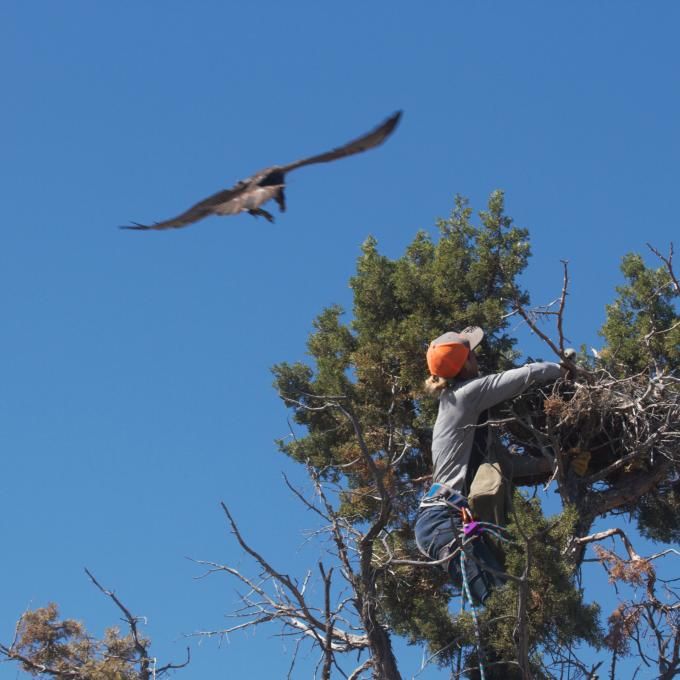
Advisor
Matthew JohnsonElizabeth Meisman,
Thesis:Testing Adaptive Flexibility in Breeding Swainson’s Hawk Territory Habitat Selection
Lizziwill be investigating potential mismatchesbetween habitat quality and selection in Swainson's Hawks (Buteo swainsoni) in Northern California. In long-lived territorial species like Swainson’s Hawks, these mismatches may pose serious risk to population viability. One of the longest running raptor studies in North America has continuously monitored breeding in a population of Swainson’s Hawks in Butte Valley, California since 1979, representing more than 40 years of research. Swainson’s Hawks exhibit strong site fidelity to territories on their breeding grounds. The majority of breeding pairs have established territories around, or in close proximity to, irrigated farmlands producing hay varieties (e.g., alfalfa). This long-term dataset is ideal to test whether adaptive habitat selection is operating as habitat conditions have changed over time. This research aims to explain the influence of varying agricultural crops to Swainson's Hawk territory selection and reproductive success in the Butte Valley over time. This information will have implications for the viability of the Butte Valley Swainson’s hawk population in the face of climate change and anticipated water shortages.
Jim Tietz
Breadcrumb
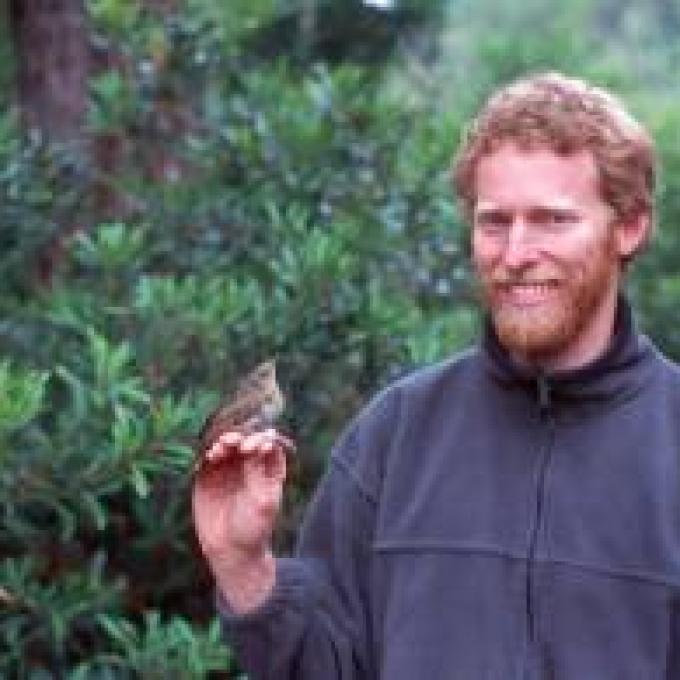
Advisor
Matthew JohnsonJim Tietz, 2006
Thesis:
After Humboldt, Jim worked for PRBO Conservation Science.
For his thesis, Jim used using radio telemetry to track migrating thrushes in forested habitats of the Lanphere Dunes near Arcata. He tested whether the birds select vegetation primarily in response to habitat structure (shrub density) or food availability (mainly huckleberries).
Megan Milligan
Breadcrumb
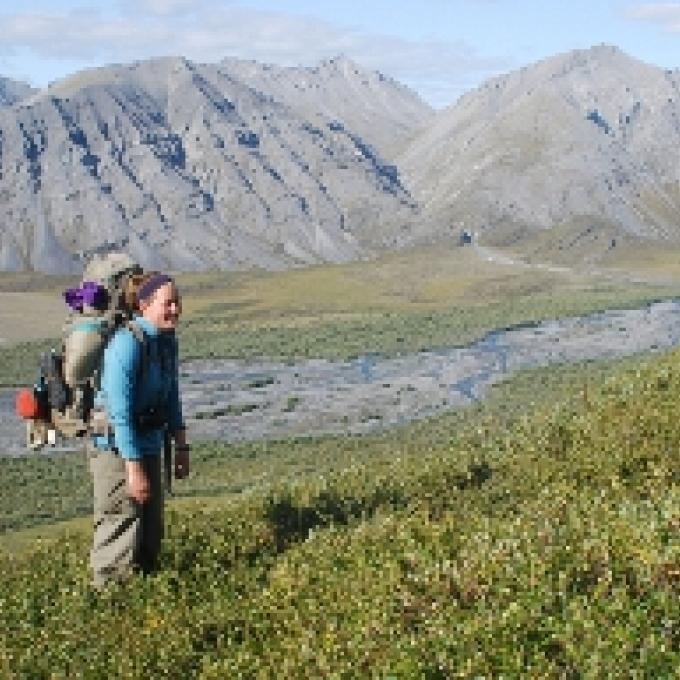
Advisor
Matthew JohnsonMegan Milligan, 2014
Thesis:
After Humboldt, Megan went on to work as an ornithologist at Hastings Natural History Reservation and then on to earn a PhD at Montana State Unversity.
For her thesis at Humboldt, Megan studied avian predation in Kenyan coffee farms and examined how pest control is influenced by the local landscape and bird community. Her project aimed to answer the following questions: are birds providing pest control services? Does that service vary with distance to the nearest forest fragment or the farm's vegetation complexity? Megan's results help reveal what habitat characteristics optimize the provisioning of pest control services by birds and inform land managers about whether it is advantageous to encourage bird populations on coffee farms.
Xerónimo Castañeda
Breadcrumb
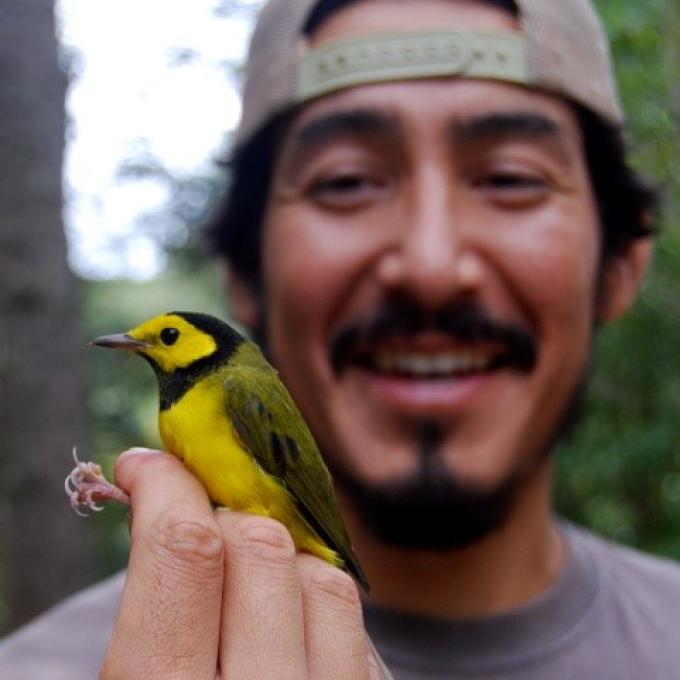
Advisor
Matthew JohnsonXerónimo Castañeda, 2018
Thesis:
After Humboldt, Xerónimo went on to work for California Audubon.
For his thesis, Xerónimo studied barn owl habitat use within a vineyard agroecosystem by quantifying the extent of time barn owls spend hunting within vineyards versus adjacent habitats. He also collected data on the owls’ efficiency in removing rodent pests from the landscape. Xerónimo compiled these data to better understand the potential for barn owls to provide regulating services to viticulturists in one of the world’s most well-known wine regions, Napa Valley.
Eric Wood
Breadcrumb
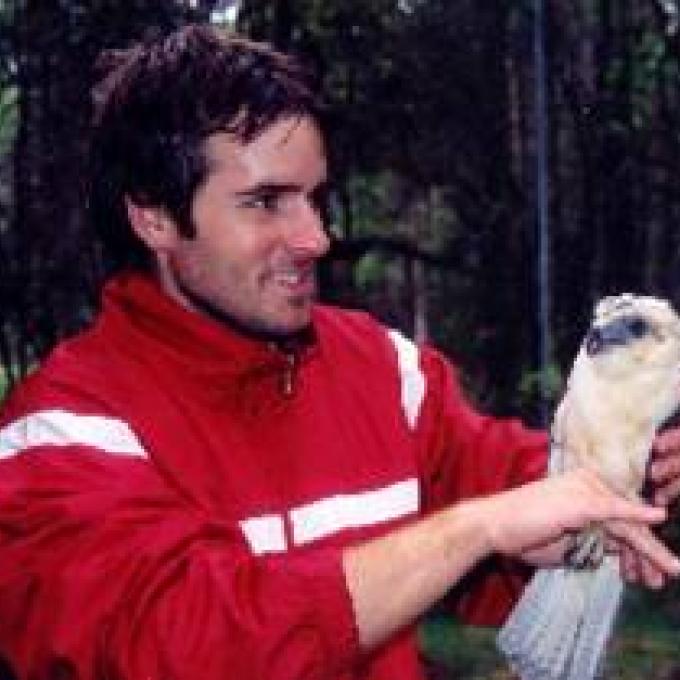
Advisor
Matthew JohnsonEric Wood, 2007
Thesis:
After Humboldt, Eric went on for a PhD at the University of Wisconsin and then on to be a professor at Cal State LA.
For his Humboldt thesis, Eric used state-of-the-art presence/absence occupancy modeling to examine habitat relationships of songbirds in blue oak woodlands. He tested the capacity for standardized vegetation data collected by the California Native Plant Society to predict bird distribution over a broad spatial extent.
Katherine Larson
Breadcrumb
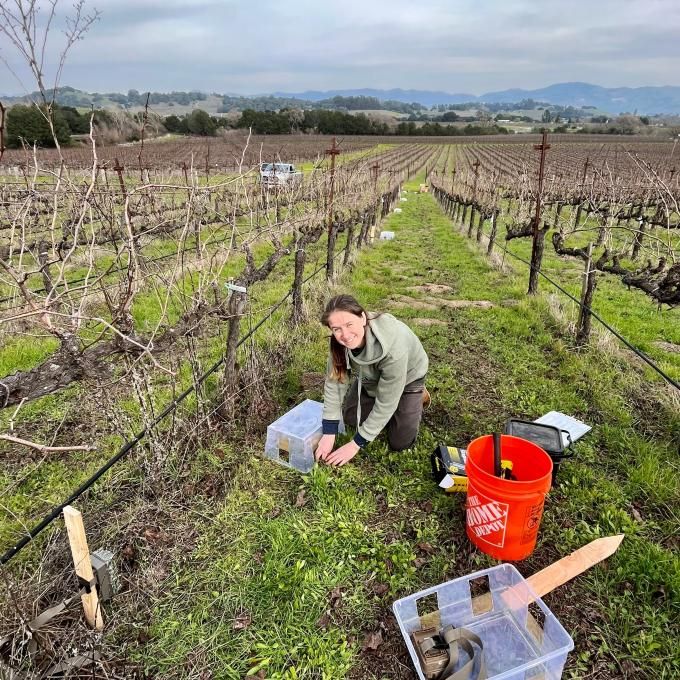
Advisor
Matthew JohnsonKatherine Larson, 2024
Thesis:
Katherine is investigating how predator-prey interactions affect ecosystem services on Napa Valley vineyards. More specifically, she using is monitoring blocks to determine if barn owls meaningfully reduce vole and mouse abundance, and she is using giving up density (GUD) trays to determine if barn owls affect vole and mouse foraging behavior. Additionally, she deploys baited camera sites to determine the effect of vegetation on vole and mouse abundance. This research may inform vineyard management decisions by demonstrating the effectiveness of barn owls as a pest management strategy and by revealing how vegetation affects this ecosystem service.
Laura Echávez
Breadcrumb

Advisor
Matthew JohnsonLaura Echávez, 2023
Thesis:Polymorphism of barn owls in a managed ecosystem
From dark reddish to crisp white, and from heavily spotted to almost no spots at all, barn owls can exhibit a wide range of plumage coloration. In other regions, Barn owls have been shown to associate with different foraging areas based on their coloration, and this affects which rodents they hunt, but the effects and extent of color variation in managed winegrape vineyards ecosystems remain unknown. Laura’s research measured the extent of plumage variation and its relationships with habitats and the effects on predator-prey interactions in Napa Valley vineyards. Her research goal was to further our understanding of the effect of polymorphism on rodent pest control, which will hopefully assist farmers’ decisions regarding nest box placement relative to and the management of cultivated and uncultivated areas. After completing her MSc, Laura went to work for the Golden Gate Raptor Observatory.
Christian Cortez
Breadcrumb

Advisor
Matthew JohnsonChristian Cortez,
Thesis:Physiological conditions of barn owl (Tyto furcata) nestlings as indicators of habitat quality within the wine-growing region of Napa Valley
Christian will be assessing several physiological conditions of barn owl nestlings from nest boxes to investigate the effects of nearby land cover on their health. These physiological conditions include feather growth bars, fault bars, heterophil-lymphocyte ratios, and corticosterone levels in feathers. Previous studies conducted in Napa Valley have demonstrated barn owl preference for uncultivated land cover in terms of hunting activity, prey availability, and nest box location. This study may further clarify how land composition in an agricultural setting can affect a species that provides an ecosystem service through the outcomes of habitat selection.
Megan Garfinkel
Breadcrumb
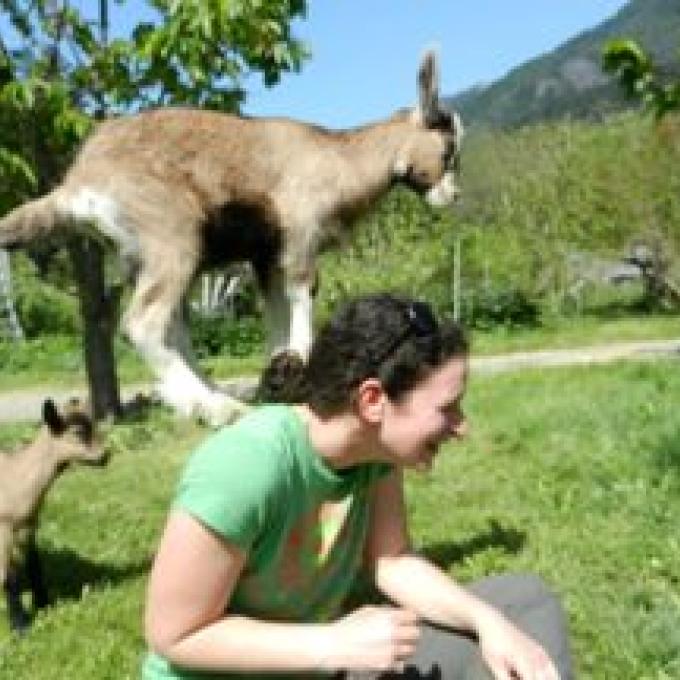
Advisor
Matthew JohnsonMegan Garfinkel, 2013
Thesis:
After Humboldt, Megan went on to earn a PhD at University of Illinois at Chicago.
For her Humboldt thesis, Megan studied songbird populations on organic row crop farms in order to answer the questions: do insectivorous songbirds provide a top-down effect on row crops by providing pest-removal services? Does that effect vary with population parameters such as songbird diversity and abundance? Megan's results provided information to organic farmers about whether it is economically advantageous to encourage bird populations on farms.


